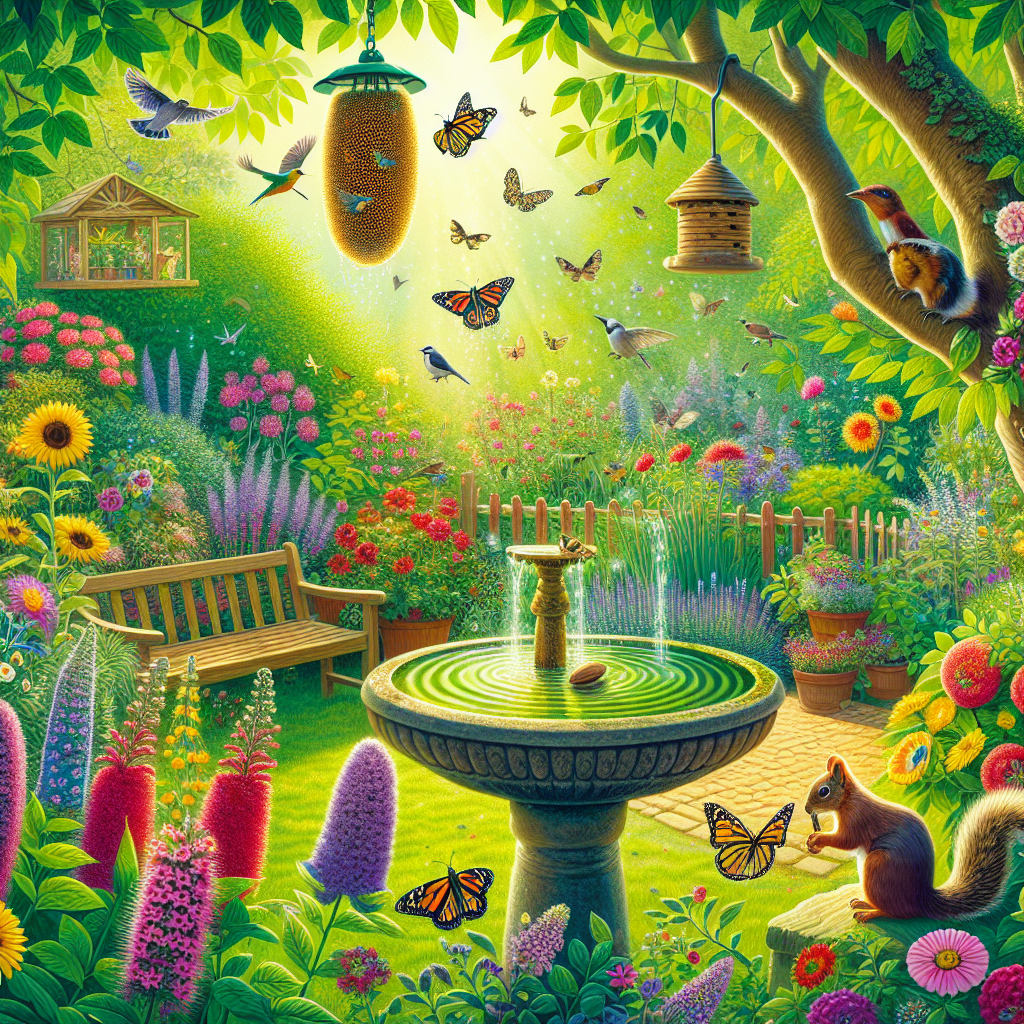Attracting Wildlife to Your Garden: Tips and Tricks
Are you looking to bring a bit of the wild into your backyard? Attracting wildlife to your garden isn’t just about enjoying the flurry of activity and the pleasant backdrop of birdsong. It’s also about creating a healthy ecosystem right at home. Numerous species, from birds to bees and butterflies, are essential pollinators and pest controllers that can enrich your space and keep your plants thriving. In this article, we’ll dive into the various ways to make your garden more wildlife-friendly.
Offer a Variety of Plants
One of the most effective ways to attract wildlife is to cultivate a diverse range of plants. A variety of plants will support a wide spectrum of creatures, each with their own preferences. Native plants are particularly beneficial as they have evolved alongside local wildlife and can meet their specific needs. The National Wildlife Federation provides excellent resources for identifying native plants that work best in your region.
Create Layers of Vegetation
Layering your plantings to mimic a natural habitat can provide shelter and food for different species. Include ground covers, shrubs, and trees to offer various nesting sites and protection from predators. This guide by the Audubon Society can help you understand how to establish these layers effectively.
Build a Water Source
Water is a critical element for wildlife. By adding a simple bird bath or creating a small pond, you can provide a water source for drinking, bathing, and in some cases, breeding. Ensure you keep the water clean and replenish it regularly to prevent the spread of diseases. Consider installing a solar-powered water fountain to keep water moving and reduce mosquito breeding.
Offer Food Sources
While plants are a natural food source, supplementary feeding stations can support a wider variety of species and attract them more quickly. Install bird feeders with a mix of different seeds, suet, and nectar feeders for hummingbirds. Don’t forget about fruit-bearing plants and flowering species that can provide nourishment throughout the growing season. Be aware, though, that feeders should be cleaned regularly to prevent the spread of disease among visiting wildlife.
Provide Shelter
Habitat loss is a significant issue for many species. You can help by providing man-made shelters. Birdhouses, bat boxes, and insect hotels can offer essential refuge for creatures in need. When placing these shelters, consider the specific needs of the species you wish to attract. For instance, bat houses should be placed in sunny areas and at certain heights to be effective.
Practice Natural Pest Control
Toxic pesticides can harm the very wildlife you’re trying to attract. Therefore, adopt natural pest control measures. Practices like companion planting, encouraging beneficial insects, and manual removal can keep pest populations down without using harmful chemicals. The Environmental Protection Agency provides guidance on sustainable gardening practices that can benefit your wildlife haven.
Allow for Some Wildness
While neatness might be visually appealing, a bit of untamed nature is actually more beneficial for wildlife. Leave some areas of your garden a little wild with piles of leaves, a stack of logs, or an unmown patch of grass. Such areas can provide critical habitat for creatures ranging from amphibians to invertebrates.
Avoid Lighting Pollution
Excessive outdoor lighting can disorient nocturnal wildlife and deter them from your garden. Use motion sensor lights or shielded fixtures to minimize light pollution. Opt for warm-colored, low-intensity lights when possible, as these are less intrusive for wildlife.
Connect with Community Efforts
Wildlife corridors are essential for species that travel across different habitats. Engaging with local conservation efforts to create these corridors can make your garden part of a larger network of green spaces that support wildlife. Keep up with local organizations, such as a community garden club or the Xerces Society, which work towards environmental preservation and creating pollinator-friendly landscapes.
Patience is Key
Remember that establishing a wildlife-friendly garden may take time. It could be a while before animals start showing up in numbers. But with patience and commitment to these practices, you will gradually see an increase in the variety of creatures that come to visit and stay.
Conclusion
Attracting wildlife to your garden transforms it into a thriving oasis that isn’t just a joy to watch, but also plays a vital role in the local ecosystem. By focusing on plant diversity, providing water, shelter, and food sources, and considering the needs of different species, you can create a welcoming and supportive environment for nature’s wonderful creatures.
Remember, every little change counts. Even a small garden space can make a substantial impact on local wildlife. Happy gardening, and enjoy the lively sanctuary you’re about to create!

